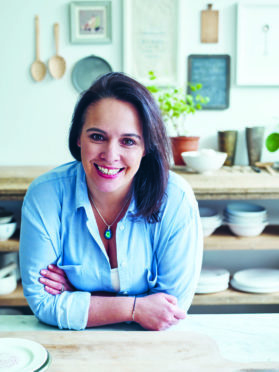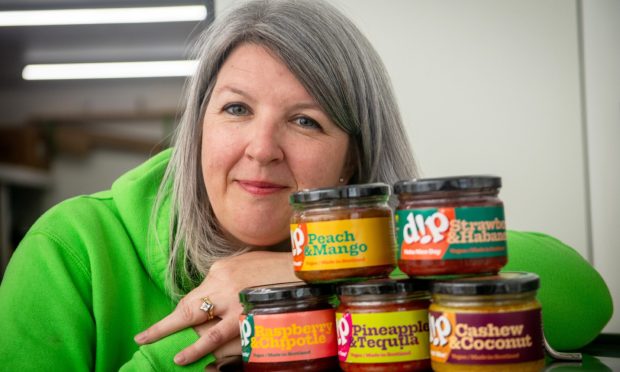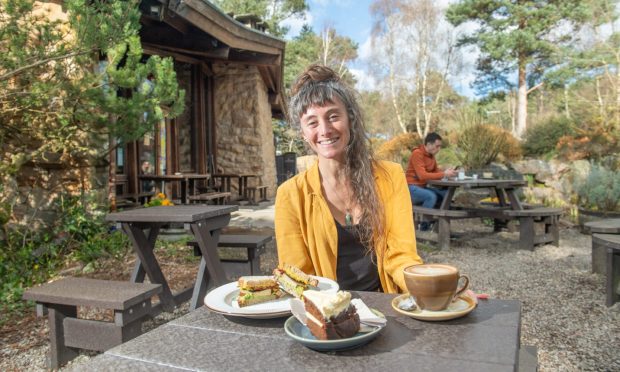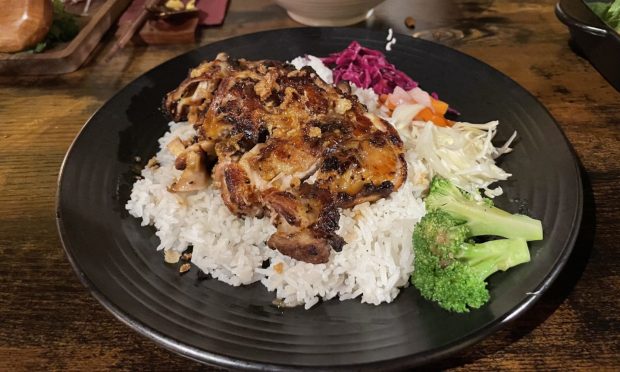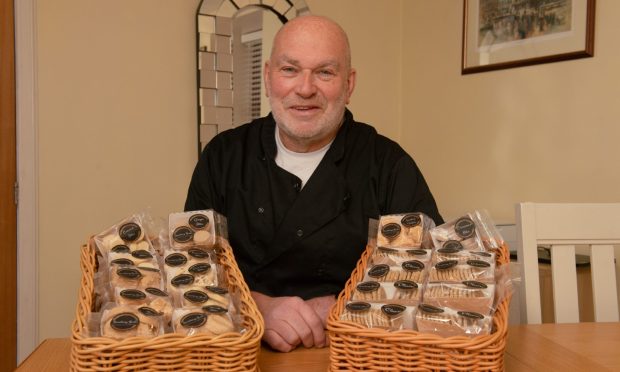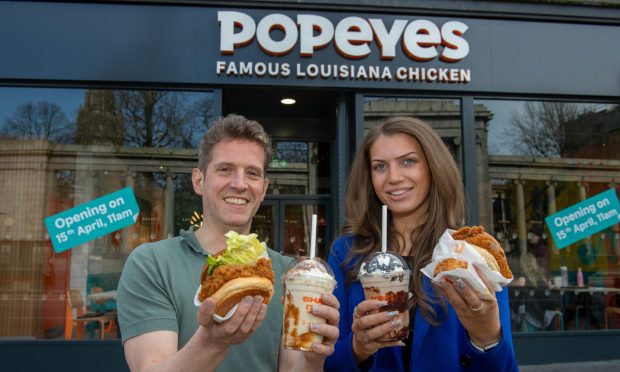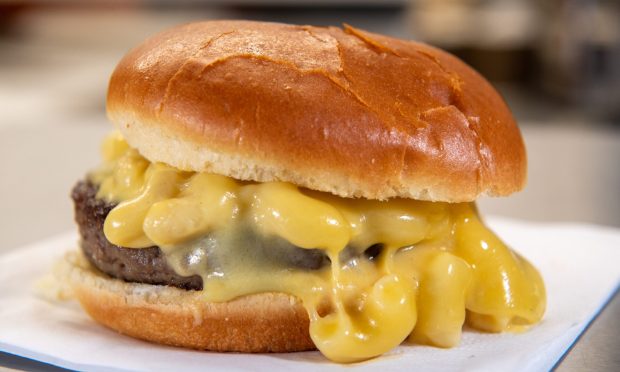Anne Shooter talks about her recipes’ family roots and how Jewish food is changing.
Syrian Courgette and Cheese Pies
MAKES 16-24 DEPENDING ON SIZE
“These soft, pillowy little open pies, called fatayer, are popular all over the Middle East, where they are often grabbed as a snack from a market stall, served on platters at parties, or served for lunch with a mound of tomato and cucumber salad,” says Anne. “Shaped like petals, or boats, they couldn’t be prettier and you can experiment with all sorts of fillings – meat and spinach are traditional. The dough only takes about 20 minutes to rise, so you can make the filling during that time and have them on the table shortly after.”
FOR THE DOUGH
350g plain flour
7g sachet instant yeast
2tsp granulated sugar
Half tsp salt
200ml lukewarm milk or water
75ml olive oil, plus extra for oiling and brushing
FOR THE FILLING
3 courgettes, coarsely grated
200g feta, drained and crumbled
1tbsp sumac
Small bunch of flat-leaf parsley, chopped
1 egg, beaten
Salt and freshly ground black pepper
Mix together the flour, yeast, sugar and salt in a bowl. Add the milk or water and olive oil. Knead by hand or in a free-standing mixer fitted with a dough hook until the dough is soft and no longer sticky. Coat a bowl with a little olive oil, form the dough into a neat ball and place in the bowl. Cover with lightly greased cling film and leave to rise somewhere warm until it doubles in size, about 20 minutes.
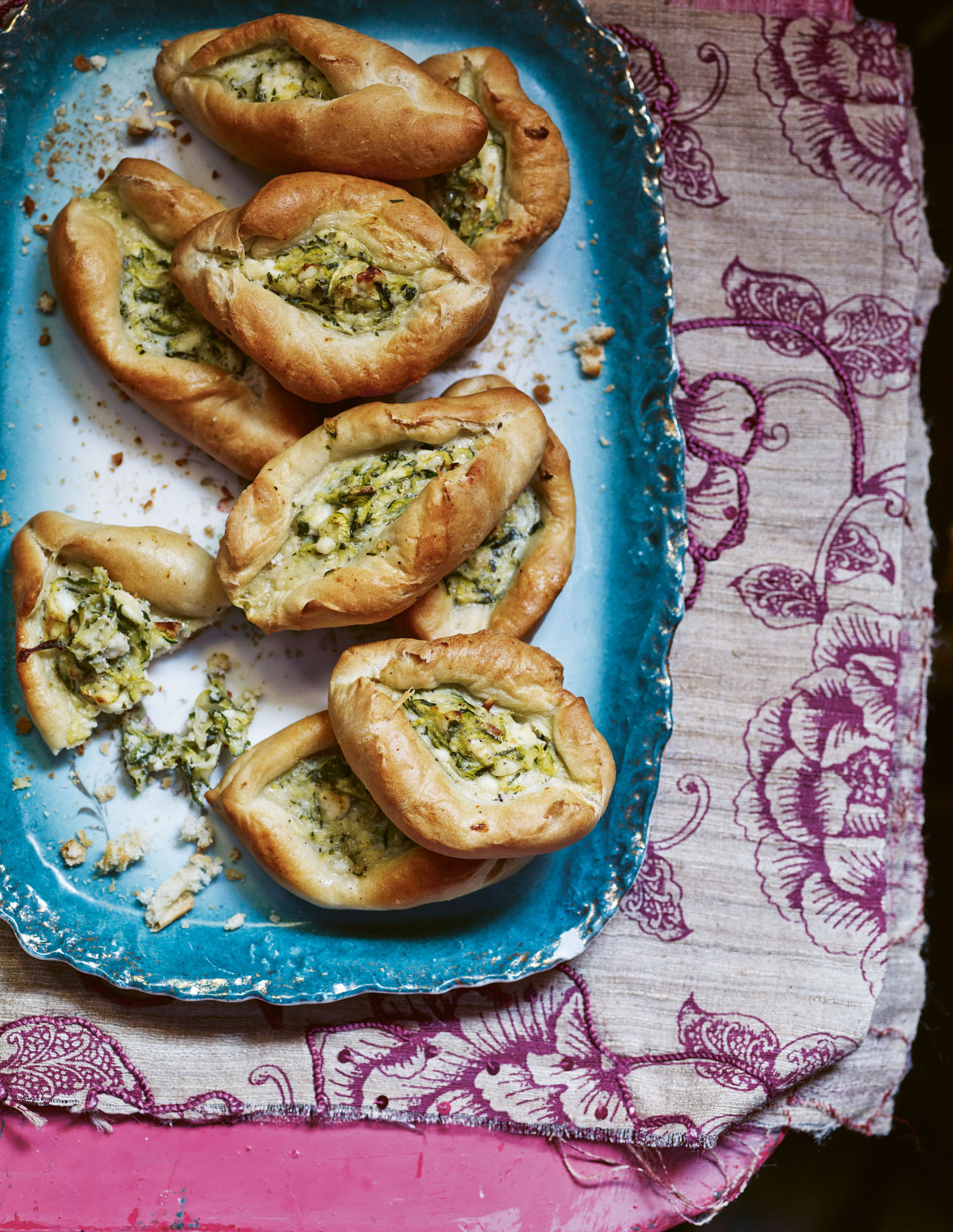
Preheat the oven to 200°C/ gas 6.
Place the grated courgettes in a colander to drain over a sink. When you are ready to make the filling, squeeze them with a clean tea towel to remove as much moisture as possible. Add the squeezed courgette to a bowl with the other filling ingredients and mix gently to combine.
Form the dough into 16 balls (or 24 smaller balls) and roll each ball into a long oval shape about 5mm thick. Place around one to two tablespoons of filling in the centre of each oval.
Fold one long edge a little bit over the filling, forming a frame for it but leaving some filling exposed. Press down to seal at each end of the folded edge. Do the same on the other side, forming a petal or boat shape. Pinch the edges well to seal.
Repeat with the remaining dough pieces and place them on lightly oiled baking sheets. (You need to work quickly as the dough will continue to rise and the pies may open, so you may want to bake one tray while finishing the second tray.)
Brush the edges with olive oil, then bake for about 15 minutes until the dough has turned golden brown and the cheese mixture has melted. Serve warm or at room temperature.
Lamb in Coriander Sauce from Cochin
SERVES 4
“This is a recipe adapted from the amazing Indian Jewish cookery book Spice & Kosher: Exotic Cuisine Of The Cochin Jews,” explains Anne. “It has a ton of ingredients but is really easy to make and beautifully fragrant and mild – but if you are one of those people with a genetic propensity to hate coriander, look away now.”
2tbsp coconut oil or sunflower oil
500g cubed lamb shoulder
2 onions, chopped
Large bunch of coriander leaves, chopped
1 mild green chilli, deseeded and finely chopped
2 garlic cloves, very finely chopped
5cm piece of fresh ginger, peeled and grated
2tbsp ground coriander
1tsp ground turmeric
Half tsp fennel seeds
Seeds from 2 cardamom pods
Pinch of ground cloves
Pinch of ground cinnamon
2tsp mild chilli powder
4 curry leaves
1 tomato, chopped
Good pinch of salt
200ml water
2tbsp toasted flaked almonds, to garnish (optional)
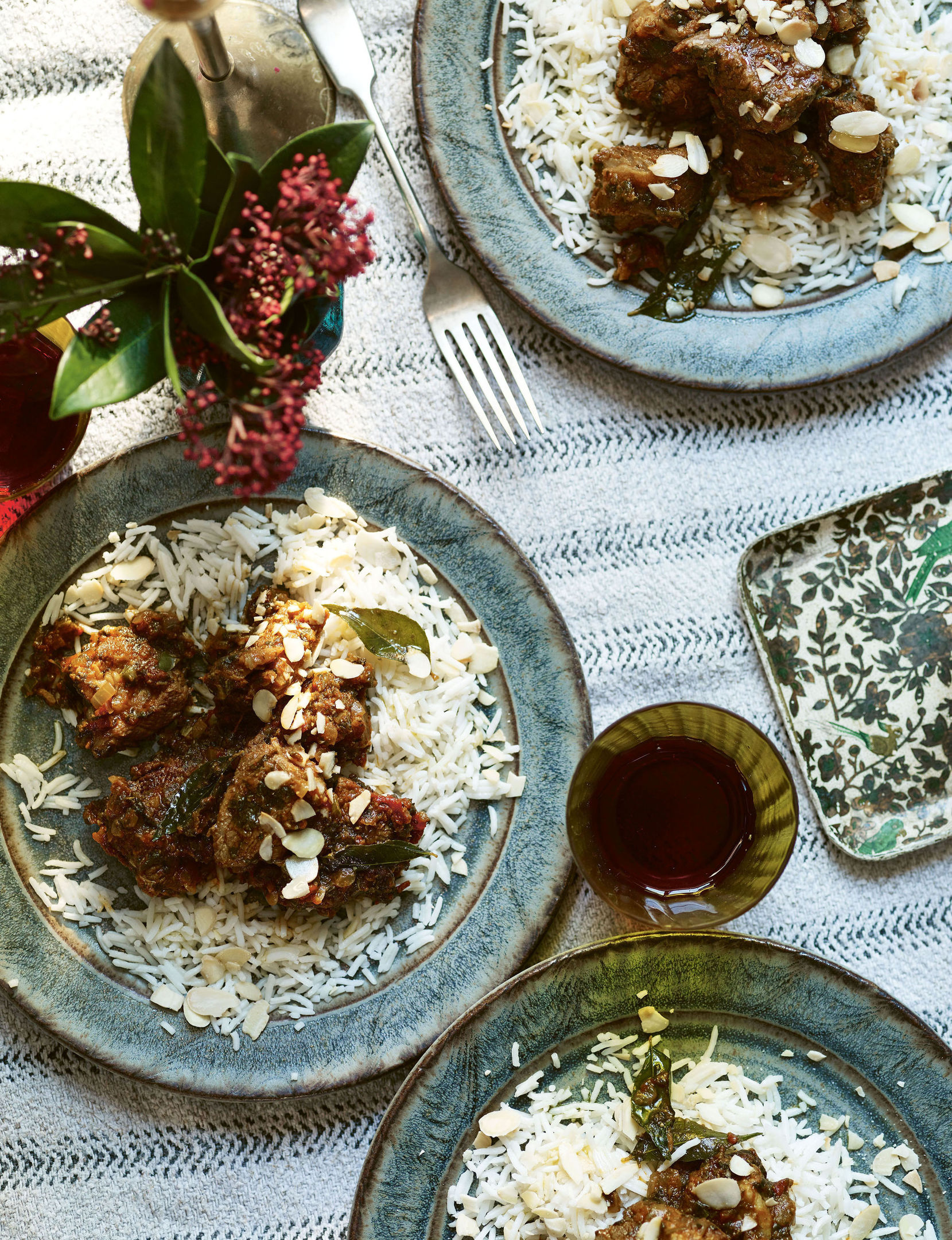
Heat the oil in a large pan or deep-sided frying pan over a medium heat. Add the lamb cubes and fry until the lamb is brown on all sides, then add the onion and fry until softened, about 10 minutes.
Add the chopped coriander, chilli, garlic and ginger and cook for a further two minutes. Add the remaining spices, the curry leaves, chopped tomato and salt and cook for a further two to three minutes, stirring occasionally.
Add the water and bring to the boil, then reduce the heat and simmer very gently for one hour, uncovered. Keep an eye on it and add a little more water if it dries out.
Garnish with toasted flaked almonds, if using, and serve with rice.
Middle Eastern Mess
SERVES 6
“Never has there been a better reason to not worry about whether your pavlova is cracking in the oven than Eton Mess,” says Anne. “My take on the British classic contains figs, date syrup and bashed up baklava, along with shop-bought meringues and raspberries. Of course, you can make your own meringues (or use a cracked pavlova), but we all need recipes we can make in a hurry. The baklava is optional but fun and provides a great texture. Also, you can buy it in supermarkets now and it’s not expensive, so why not?”
300g mascarpone
150g Greek yoghurt
75g icing sugar, sifted
1tbsp rose water
3 meringue nests, roughly smashed into pieces
6 plump figs, quartered
450g raspberries
2tbsp date syrup (silan)
Around 8 pieces of baklava, smashed with a rolling pin (optional)
100g pomegranate seeds
Small bunch of mint leaves, shredded
Stir together the mascarpone, Greek yoghurt, icing sugar and rose water in a bowl, until well combined and creamy.
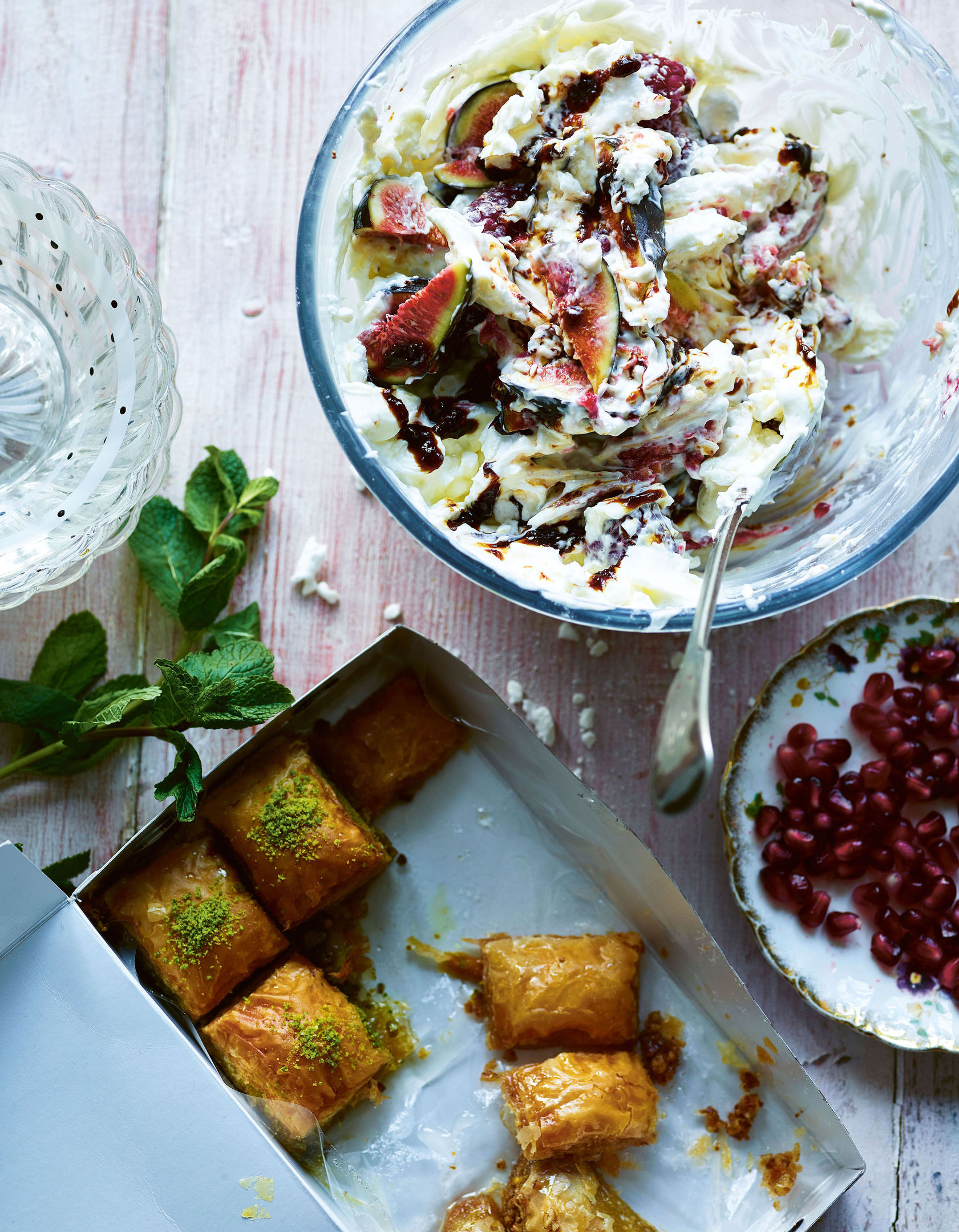
Fold in the smashed meringue nests, figs and raspberries.
Drizzle over the date syrup and broken baklava pieces, if using, and fold again.
Cover and chill in the fridge until ready to serve. Serve chilled sprinkled with the pomegranate seeds and mint leaves.
Anne Shooter’s cookbook career was triggered by her having to dress up as bona fide cookbook legend. The former journalist had to pose as Nigella Lawson for a feature, “which was hideously embarrassing – I had to wear loads of control underwear and a wig”, she recalls.
She ended up bumping into the real Nigella at a party (“She was fabulous”) and thought to herself: “If I was Nigella, maybe I’d write a Jewish cookbook next.”
Having trained at Leiths Cookery School, she was already considering setting up her own pickle company and had noticed a real revival in newish-Jewish food (“People were starting to do slightly trendier things with old-school Jewish recipes, like putting wasabi in their cream cheese”). So her next logical thought was, of course, “Hang on, I could write that book!”
Cherish is her second cookbook, following her 2015 debut, Sesame & Spice, but this is the one her 12 and 14-year-old daughters wanted her to write – so they’d have all their mum’s recipes on file when they grow into adults with their own kitchens.
“It’s the kind of food I cook all the time,” says Anne, flicking through pages of crisp chicken thighs baked with walnuts and pomegranate, roasted aubergines drizzled with tahini, and fried pitta pockets bursting with lamb mince. “It’s just really nice, homely food – some of it isn’t even particularly Jewish.”
Anne’s own style of cooking, reflected in Cherish, is “more of a mish-mash”, especially when it comes to her family’s traditional Friday night dinner – where having 15 people round the table is “quite standard”.
“It’s noisy, warm, there’s lots of chat, lots of eating – there’s always a lot of talk of diets within Jewish community, and I think that’s possibly because we have Christmas dinner pretty much every week,” she says with a laugh.
While Anne will still start Friday night dinner with the same appetisers as her mum – grated hard-boiled eggs bound together with chopped spring onion and mayonnaise, and a coarse pate of chopped chicken livers – she’ll also do hummus, an aubergine salad and some tabbouleh salad. A roast chicken might come out doused in pomegranate molasses or paprika too – but, she promises, “without it feeling like a Seventies buffet”.
The jumbling of flavours from Ashkenazi and Sephardic Jewish origins, Anne reckons, is in part down to tastes changing and the availability of ingredients evolving, but also due to the fact the traditional role of the Jewish matriarch is different now.
“All my friends are working mums, so a lot of this food doesn’t take very long to make and doesn’t insist on everything being made from scratch,” says the food writer, who was the first woman in her family to go to university, and have a career and raise a family. “I do love a shortcut. I might buy a pre-diced butternut squash, and I’ll buy jars of passata that have a sofrito in it already.
“You don’t generally get me bashing a pomegranate – I buy those seeds in a pot, thank you very much.”
Here are three tasty recipes from Cherish: Food To Make For The People You Love by Anne Shooter.
